
by François Saez
&
Paul Williams

by François Saez
&
Paul Williams
Part I: Description & Construction
| "Für besondere leistung im
Luftkrieg"
|
|
|
|
The original order establishing the Honour Goblet or Ehrenpokal |
|
|
The design reflects that of the World War I goblet, the "Ehrenbecher für Sieger im Luftkampf". Superbly crafted by the firm of Joh. Wagner & Sohn in Berlin -the sole manufacturer - this 'non-portable award' bridged the gap between the Iron Cross 1st Class and the German Cross in Gold or Knight's Cross. |
|
Technical Information Two types of Ehrenpokal were awarded during the war, distinguishable solely by the metal used in their manufacture.
Example to the left: 835 Silver, example to the right: Alpaka Four views of the recipient's details engraved on an Alpaka Honour Goblet |
|
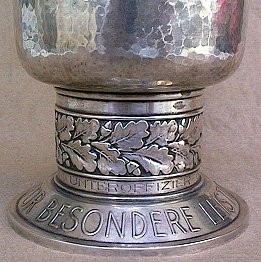
|
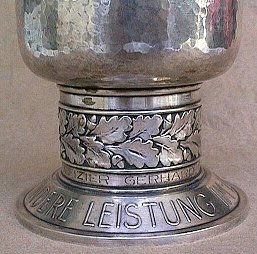
|
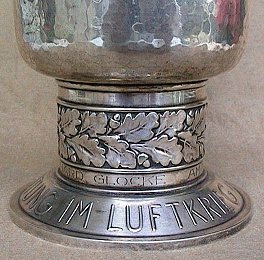
|
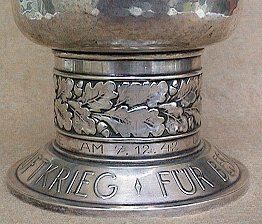
|
| The manufacturer's trademark as well as an indication of the metal used in construction was stamped on the underside of the cup. The following images show the location and type of markings to be encountered: | |
|
|
|
|
|
|
| The author has noted on some 835 silver goblets an additional number ("53"). The significance of this has not been determined ... possibly a production number or delivery number? These markings are from the Ehrenpokal awarded on 19.12.40 to Oberleutnant Walter Schneider a member of JG 26 Schlageter. |
|
Construction
|
|
The Ehrenpokal is made up of three parts: the cup, stem and base These parts are formed from strips of silver or German Silver upon which the various motifs - eagles, iron cross, oakleaves & acorns, and inscription "für besondere leistung im Luftkrieg" have been die struck.. The cup has an overall fine, hammered effect
|
|
|
|
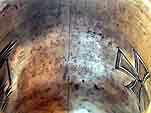
|
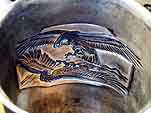 |
| 'Inside' the 835 silver Ehrenpokal of Major Rudolf Schoenert, awarded January 1942
|
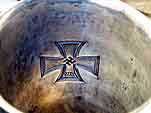 |
|
| The authors have made a detailed study of seven original goblets - two silver and five Alpaka. The following table provides the average data for the two types: | |||||||||||||||||||||
|
|
| Main Page | Iron Cross | German Cross | War Merit Cross | Wound Badges | War Badges |
| Campaign Awards | Service Awards | Honor Awards | Axis Allies | Collectors Corner | Online Forum |
The authors invite readers to contribute any new information to this article fsaez@noos.fr, esprit@camtech.net.au - May 2001